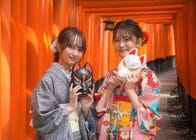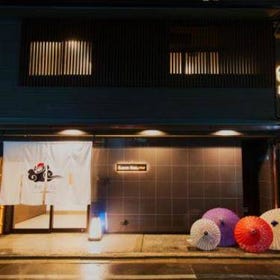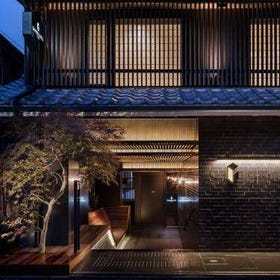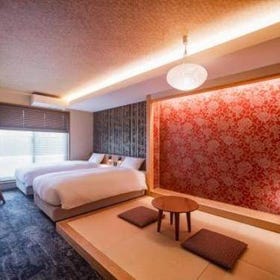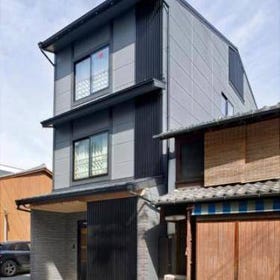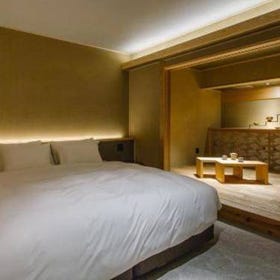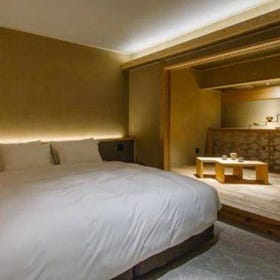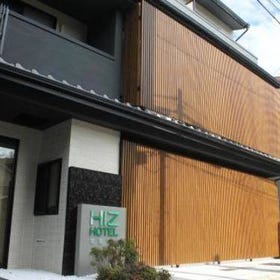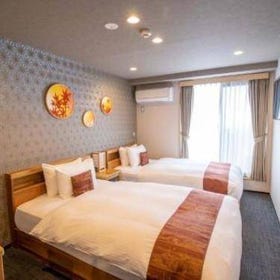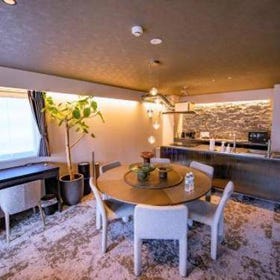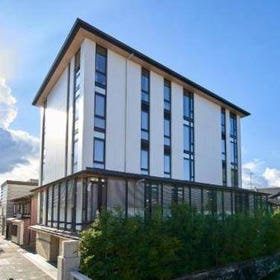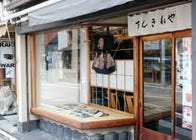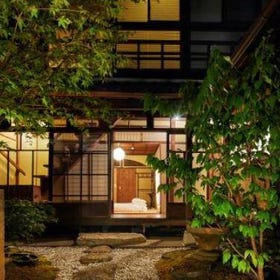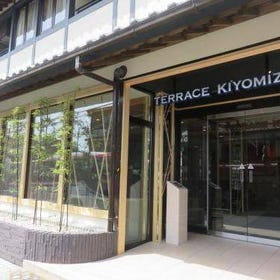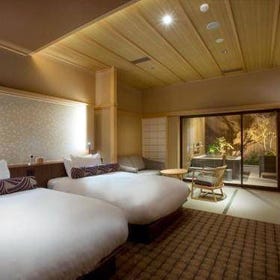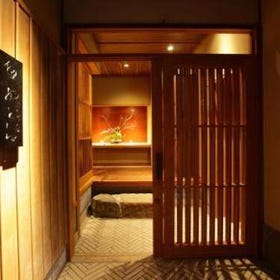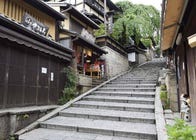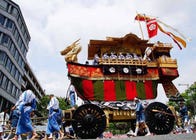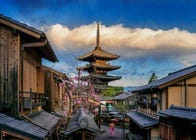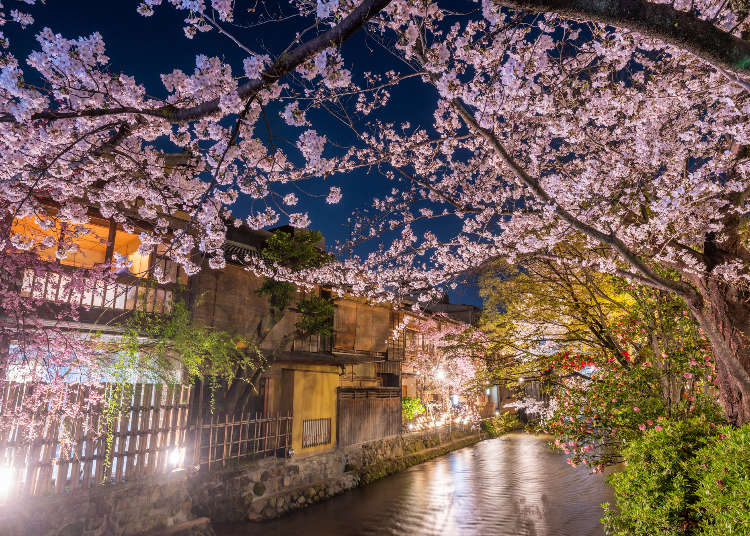
Where You Should Stay in Gion/Higashiyama: Best Areas & Top 17 Hotels For Visitors
- Written by: Lucio Maurizi
Gion is one of Kyoto's most visited areas, and for a good reason. Gion is one of the oldest geisha districts in Japan; it exudes tradition, is stunningly beautiful, and is filled with streets, temples, shops, and entertainment to explore.
Although a beautiful area to wander during the day, Gion really comes alive at night. Staying in Gion will let you enjoy everything this traditional district offers.
Main image: PIXTA
Getting to and around Gion and Higashiyama
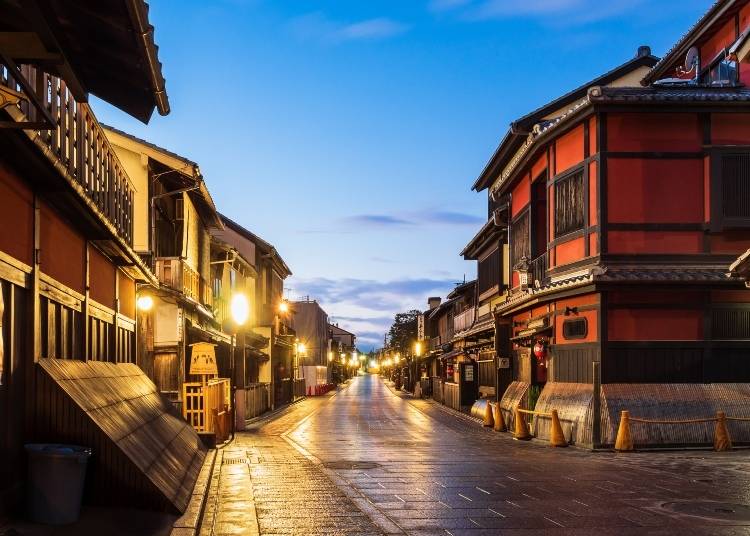
From Kyoto Station
・By Train: Take the Kyoto Municipal Subway Karasuma Line to Shijo Station and transfer to Karasuma Station on the Hankyu-Kyoto Line (3-minute walk). From Karasuma Station, travel to Kyoto-Kawaramachi Station (2 minutes, 380 yen). From here, it is around a 10-minute walk to many destinations in the Gion area.
・By Bus: Busses 100 and 206 will both take you there in roughly 20 minutes from Kyoto Station (get off at the Gion bus stop).
Getting Around Gion
The best way around Gion is walking. It's not a very large area (roughly 30 minutes walking end-to-end), and it's riddled with spots you will want to stop and see or visit.
Why visit Gion and why stay there?
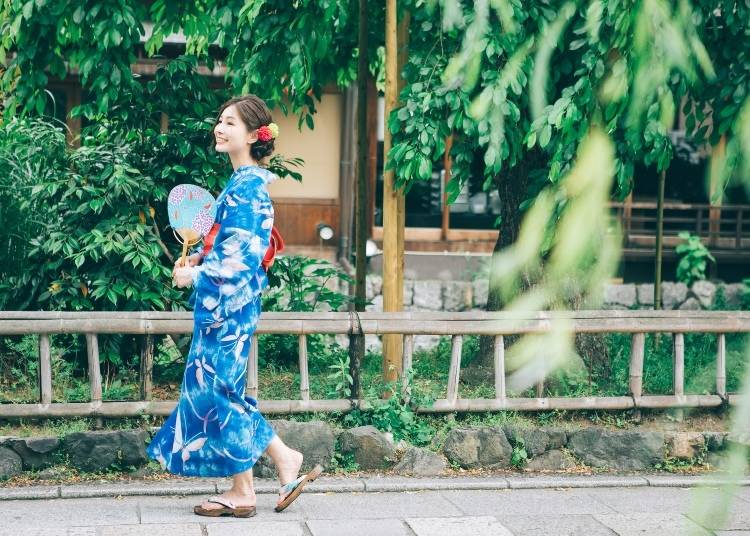
When you imagine what Kyoto must look like, you’re probably picturing Gion. Gion is one of the oldest geisha and maiko (geisha in training) districts in Kyoto, and it’s perhaps the most popular as well.
Especially when it’s not too crowded, you can experience what makes Kyoto famous. Its beautiful streets in tunnels of cherry trees, a river rushing in the background, real geisha walking to work, traditional food, temples, and more. Gion is an experience in itself; after exploring the rest of Kyoto during the day, it’s the perfect place to enjoy after dark – making a stay here very unique.
Where is the best area to stay in Gion?
Gion is located in an area called Higashiyama. Higashiyama is filled with a number of traditional neighborhoods and sightseeing locations, including Kiyomizu-dera Temple, Yasaka Shrine, and several shopping areas.
The following are the best, most convenient areas to stay in Gion, beginning with the popular areas and places that are easiest to access via public transit.
1. Gion-Shijo Station area
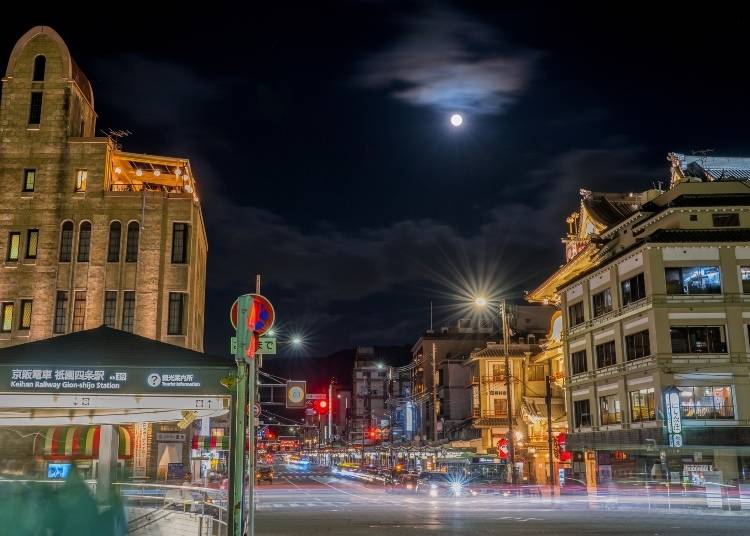
The center of Gion. Direct access from and to Kyoto Station via train or bus, and sitting in the center of a plethora of places to visit.
Gion-Shijo is the most connected but also the potentially most crowded area of Gion. During the day, it's constantly bustling with locals and tourists. Nevertheless, it's easy to avoid some of the crowds if you walk by the Kamo River. You might also like the area's vibrant atmosphere, and enjoy the street artists, musicians, and craftsmen who populate the streets daily.
Right across the river from the station is Pontocho & Kiyamachi Street, an area filled with narrow alleys and great restaurants and bars.
2. Higashiyama Station area
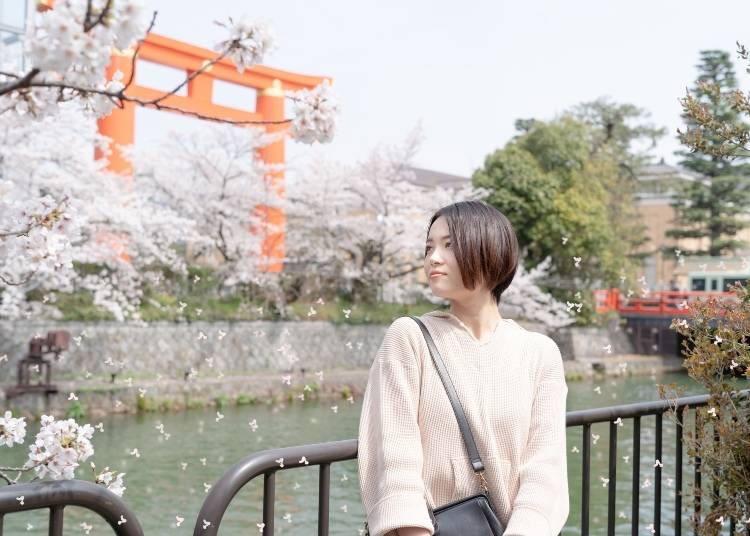
Higashiyama Station is just several blocks north of Gion-Shijo. You are still very close to Gion, and will enjoy a similar vibe, but the streets will not be as crowded. In this area, you can really immerse yourself in the typical image of Kyoto while strolling around quaint old streets.
Getting to the Higashiyama Station area
From Kyoto Station, take the Kyoto Metropolitan Subway Karasuma Line (bound for Kokusaikaikan) to Karasuma Oike Station; transfer to the Tozai Line (bound for Rokujizo) and get off at Higashiyama Station.
Why stay in the Higashiyama Station area?
Centrally located, Higashiyama Station is exceptionally easy to access via subway, and a variety of sightseeing points of interest are within a 15-minute walk. In spring and autumn, the area east of Higashiyama Station (around the Keage Incline and Nanzen-ji Temple) is famous for cherry blossoms and fall colors.
What's there to see and do in the Higashiyama Station area?
Within a 15-minute walk are Yasaka Shrine and Maruyama Park, in addition to Hanamikoji Street, a historic shopping and geisha district. North of the station is the magnificent Heian Shrine. A number of restaurants can also be found southwest of the station.
3. Kiyomizu-dera Temple/Ninenzaka area
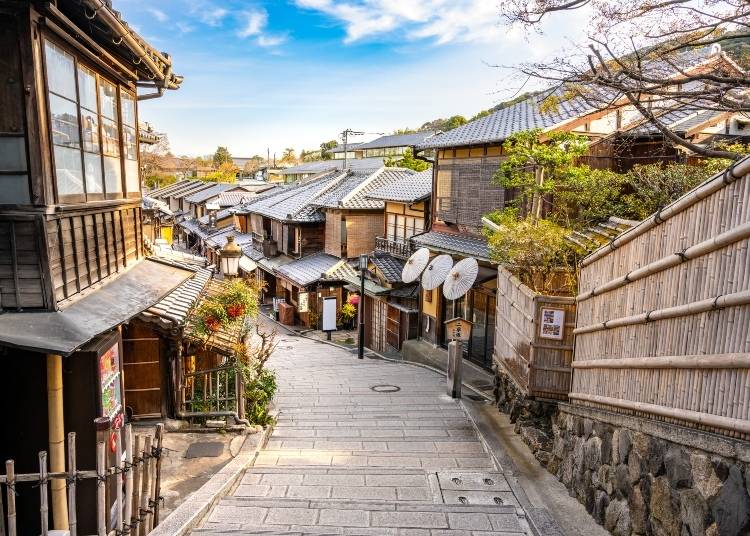
Ninenzaka (or Nineizaka) is a quaint area dotted with traditional homes and local shops nearby Kiyomizu-dera Temple. It's south of Gion-Shijo and most easily accessed by bus.
Getting to/around the Kiyomizu-dera Temple/Ninenzaka area
・From Kyoto Station, take the Kyoto City 206 bus (Stand D2; Higashiyama Dori/Kita Oji Bus Terminal) and get off at Kiyomizumichi. From there, it's around a 7-minute walk to the Ninenzaka area.
Why stay in the Kiyomizu-dera Temple/Ninenzaka area?
Kiyomizu-dera Temple is one of Kyoto's major sights. While gorgeous in each season, it's especially pretty in spring for its cherry blossoms, and for its autumn colors. While the main streets leading to Kiyomizu-dera Temple are busy during the day, side streets tend to be much quieter. It's along these that you'll encounter a variety of shops and restaurants.
Note that while this area is easily accessible by bus, if you plan to travel with children or several suitcases, you may wish to get to your accommodations via taxi, as there is limited space on the buses. Additionally, while the accommodations here are exceptional, if you intend to do a lot of sightseeing, you may wish to consider staying closer to a metro/rail station, e.g. Gion-Shijo or Higashiyama.
What's there to see and do in the Ninenzaka area
This area is filled with smaller temples and shops. Besides Kiyomizu-dera Temple, Hokan-ji Temple offers a beautiful tall pagoda that can be seen from Ninenzaka. Also, Kodai-ji Temple is home to a serene Buddhist temple and beautiful Japanese gardens.
When is the best time to visit Gion and Higashiyama?
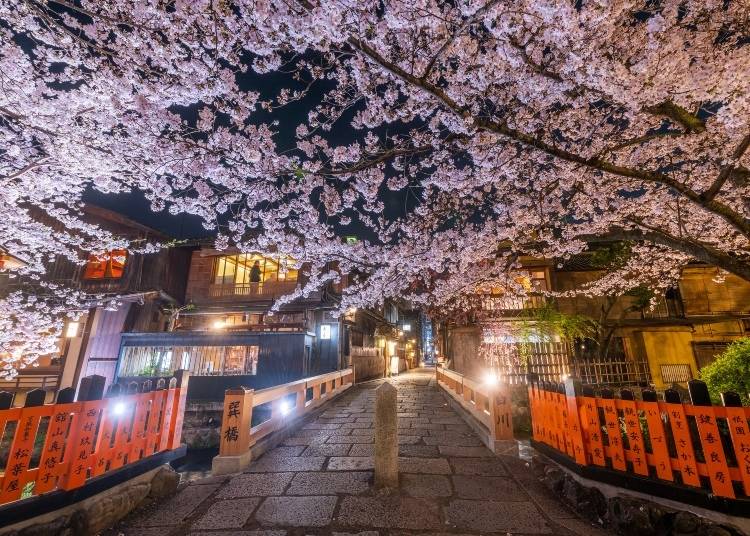
・Spring: When it comes to Gion, the best time to visit would be spring. Specifically, you'll want to visit between March and April to enjoy the cherry trees in bloom and experience an anime-like romantic atmosphere like no other time or place. Have a look at our cherry blossom forecast to help you plan dates.
・Summer: During the month of July is when the Gion Matsuri happens. The Gion Matsuri is the largest Japanese festival. If you don't want to miss it and you're fine with intense temperatures and humidity, consider visiting during the summer.
・Autumn: The Higashiyama District is filled with amazing spots that are famous for fall foliage. From around the end of November to early December, you can catch beautiful autumn colors at many of the area temples. Have a look at our fall foliage forecast for the latest dates.
As these seasons are extremely popular, hotels can get booked quickly. Making reservations at least 2-3 months ahead is recommended. Once your itinerary comes together, it may be good to consider making restaurant reservations in advance as well, especially at more popular places.
Types of accommodation in Gion
There are a variety of different kinds of hotels available in Gion. Here we’ll walk you through the main categories.
a. Hotels
The majority of places to stay in Gion are hotels such as resort hotels and business hotels, although you'll also find unique premium hotels in the city. If you're ever in the mood to splurge, treat yourself to one of these luxurious hotels and see for yourself what the hype is all about!
b. Business hotels
These kinds of hotels tend to be very economical, so the rooms tend to be quite small and basic, yet the price per night can be quite reasonable. They are quite a good choice when you just literally need a bed and aren't too concerned about creature comforts.
c. Ryokan
Ryokan are Japanese-style inns with tasteful exteriors and a feel of elegance. Guest rooms tend to have a sophisticated style and often have tatami mats on the floor. Some may have futons for bedding, while others may have a Western-style bed. The pleasure of staying at a ryokan is the meals and baths. Ryokan serve mainly local dishes made with local seasonal ingredients; these meals are often included in the price. Also, many ryokan are equipped with a large communal bathroom or an open-air bath. You can wear the yukata, a casual kimono, provided in your room, for walking around the premises.
d. Guesthouses & Hostels
Guesthouses and hostels, like the world over, offer excellent accommodation at a reasonable price. They are typically safe, clean, and often well-located in Japan. Generally, they are perfect for solo travelers or people in a small group, but some places have accommodation that is also suitable for families.
e. Vacation Rentals
While they can be somewhat more expensive than hotels, vacation rentals often are larger in size and fit more people, making them a good choice for families or groups of friends.
Kyoto has a specific type of rental option called a "machiya" or "Kyo-machiya." These are a type of traditional home found in Kyoto built before the 1950s, many of which have been refurbished into attractive accommodations.
Where to stay if Gion is booked?
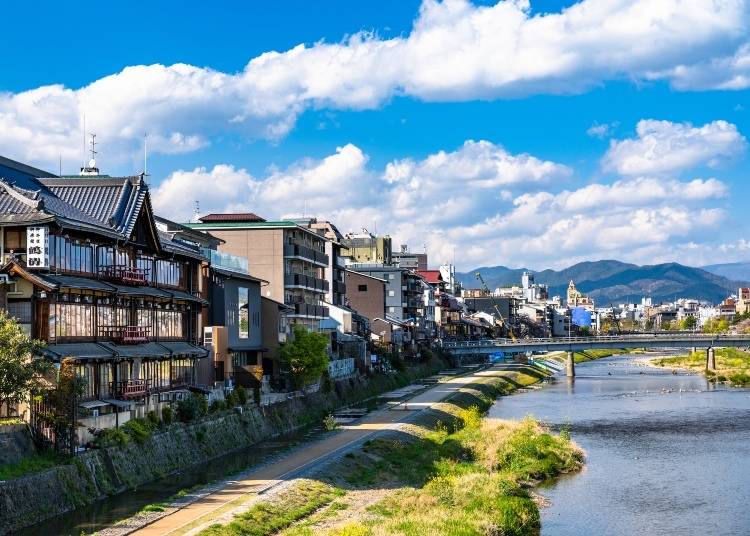
There are many accommodations in Gion, but if you visit during a peak season, you may have difficulty finding exactly what you're looking for. Alternatively, you can try the following areas:
・Around Kyoto Station
Kyoto Station is the city's central transportation hub. Not only will you find numerous attractions (like Kyoto Tower), restaurants, and shopping centers, but you will also be extremely well connected to all areas of Kyoto and other cities in Japan.
・Around Karasuma Oike Station
This area is perfect for those who don't mind a few minutes of transit time to get to the city's main tourist places. You will find great hotels, restaurants, and cafes here, and the area is within walking distance from the Kyoto Manga Museum and 10-20 minutes by bus or metro from many Kyoto attractions (including, of course, Gion).
Lucio Maurizi is an automotive expert specializing in Japan's car scene and auto-tourism. With an MA in East Asian History from La Sapienza Università di Roma, he's a multi-talented contributor to travel platforms like LIVE JAPAN, Japan Travel, and GPlus Media. His Instagram account (50k+ followers) offers insider views on Japan's automotive culture. Lucio also actively collaborates with professional drivers and influencers and organizes can't-miss car events in Tokyo.
- Area
- Category
*Prices and options mentioned are subject to change.
*Unless stated otherwise, all prices include tax.
Popular Tours & Activitiess
Recommended places for you
-

Jukuseiniku-to Namamottsuarera Nikubaru Italian Nikutaria Sannomiya
Izakaya
Kobe, Sannomiya, Kitano
-

Kanzenkoshitsuyakinikutabehodai Gyugyu Paradise Sannomiya
Yakiniku
Kobe, Sannomiya, Kitano
-

Kambei Sannomiyahonten
Yakiniku
Kobe, Sannomiya, Kitano
-
Goods

Yoshida Gennojo-Roho Kyoto Buddhist Altars
Gift Shops
Nijo Castle, Kyoto Imperial Palace
-

Abeno Harukas
Landmarks
Shinsekai, Tennouji, Tsuruhashi
-

ISHIDAYA Hanare
Yakiniku
Kobe, Sannomiya, Kitano
-

New Way to Reach Koyasan! Ride Nankai's 'GRAN Tenku' for a Heavenly Journey
by: Guest Contributor
-

Best Things to Do and See Around Kyoto & Osaka in September: Events and Festivals in Kansai
-
Ad

Recharge and Relax with a Healing Getaway at Kamenoi Hotel Toba
-
Ad

Experiencing Manga as Culture, Not Just Reading It: Expo 2025 with Rumiko Takahashi
-
Ad

Discover Timeless Beauty: Kimono-en, a Web Magazine Exploring the Spirit of Kimono
-

November Events in Kansai: Fun Festivals, Food, and Things to Do in Kyoto & Osaka
Inspiration for Accommodations
-

Spacious Family Hotel in Namba: 20 Comfortable Stays for Family Fun
-

Charming Hotels to Enjoy the Spectacular Views of Arashiyama's Autumn Leaves from Your Room
-

Experience Stunning Views of Osaka Castle from Private Spaces: Top Hotels Near Osaka Castle
-

Recommended by Visitors! Arashiyama's Best-Rated Hotels
-

Family-Friendly Universal Studios Japan Hotel with Excellent Access
-

Enjoy a Comfortable Stay in Osaka! 10 Hotels with Convenient Airport Shuttle Services
-

Top 10 Recommended Hotels Near Namba Station with Great Access
-

Enjoy Night Views from Your Room! Recommended Hotels in Namba Area
-

10 Best Hotels Near Kyoto Station: Budget-friendly, Perfect for Kyoto Sightseeing
-

5 Must-Visit Nara Temples and Shrines: Discover the Timeless Beauty of Japan's Ancient Capital
by: WESTPLAN
-

Kichijoji – Explore Tokyo’s Top-Rated Stylish Suburb in Half a Day!
-

Citadines Namba Osaka: A Unique Long Stay Experience in a National Cultural Treasure (In-Depth Review)
by: Yotsuka Hizuki
-

5 Amazing Kyoto Festivals You’ll Want to Experience During Your Next Trip
-

10 Must-Try New Hotels in Kyoto: Stylish & Modern Japanese Experience
- #best gourmet Osaka
- #things to do Osaka
- #what to do in kyoto
- #what to bring to japan
- #best gourmet Kyoto
- #new years in Osaka
- #what to buy in nanba
- #Visiting Osaka
- #onsen tattoo friendly arima
- #daiso
- #Visiting Kyoto
- #best japanese soft drinks
- #japanese fashion culture
- #japanese convenience store snacks
- #japanese nail trends













